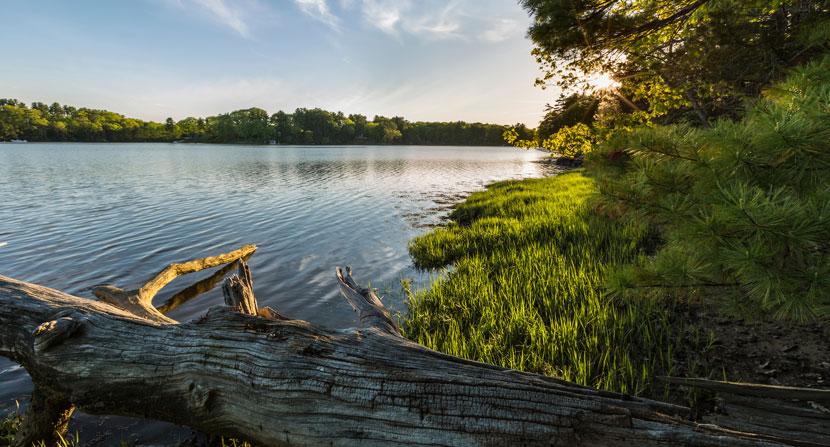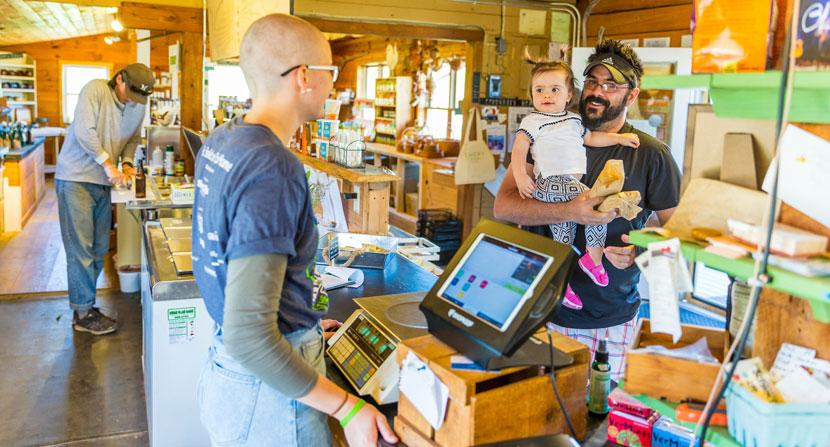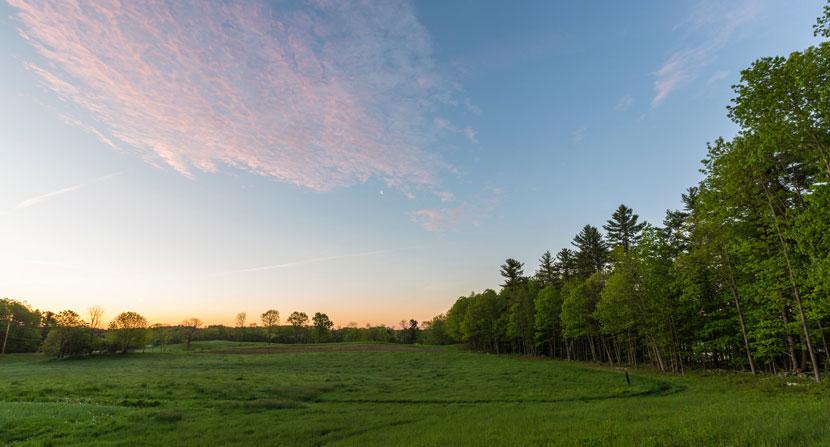Latest Easement Conserves Food and Habitat
- Tags:
- Land Conservation

The Forest Society's latest conservation easement at Emery Farm protects 1,700 feet of scenic frontage on Route 4 and 2,500 feet of tidal frontage on the Oyster River and Smith Creek. All photos by Jerry and Marcy Monkman/Ecophotography
Emery Farm in Durham has been a part of the fabric of New Hampshire’s seacoast for generations; in fact, it’s been run and operated by the same family for more than 350 years. The farm store sells fruits, vegetables, pumpkins, Christmas trees, and local goods made by surrounding artists. This year, the Forest Society bought an additional 36-acre conservation ease- ment from landowners David Hills and Catherine McLaughlin-Hills, permanently protecting the agricultural land and its important river frontage along Oyster River.

“Our family is happy to see this easement come to completion. We have always tried to make the right decision for the land, the environment, our children, and future generations,” says Hills. “We are humbled with the opportunity to keep land in its present state. This is the land’s natural state, and honoring the land has been respected by native cultures for many generations before our family settled here. Protecting Emery Farm from development and allowing it to continue its long history of farming, timber harvesting, and being a gathering place for locals is the right decision,” he notes. “We are very happy with the outcome.”
The Hills graciously sold the easement at a price significantly below market value. The conserved tract of land includes the fields and pasture on the southern side of Route 4 across from the farm store and next to Wagon Hill Farm. The easement helps to protect 1,700 feet of scenic frontage on Route 4 and 2,500 feet of tidal frontage on the Oyster River and Smith Creek.

This latest easement is the third and final phase of the effort to protect the historic farm. In 2003, the family conserved a 129-acre woodlot that is now owned and managed by the Forest Society. Then in 2006, the Hills conserved 59 acres of agricultural land surrounding the store with a separate Forest Society-held conservation easement. The Great Bay Resource Protection Partnership, the Nature Conservancy, and the Forest Society have partnered with the Hills family on each of these transactions.

